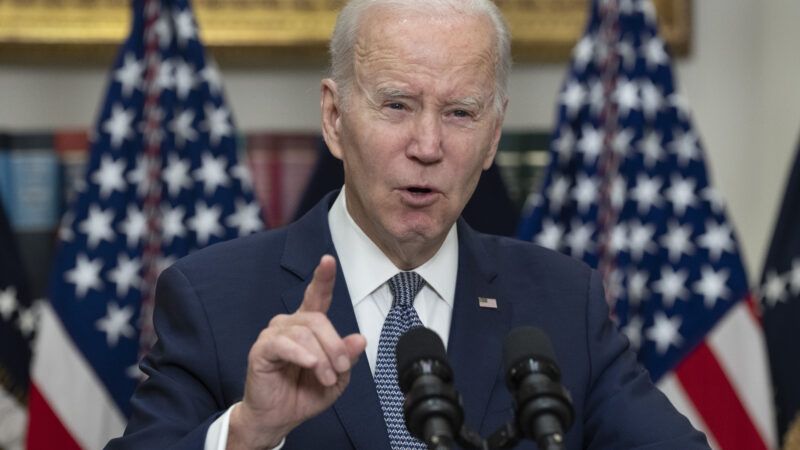Pentagon Leak Reveals 14 U.S. Troops in Ukraine
While escalation is not inevitable, it’s still a risk having any U.S. boots on the ground.

The leak of dozens of U.S. intelligence documents mostly pertaining to Russia's war against Ukraine has raised grave questions for both American policymakers and American allies and partners: Why were they leaked? How secure is U.S. information collection? How much does our government spy on its friends? Why do these materials seem to overestimate Ukrainian casualties, and how close to breakdown is Ukraine's air defense system?
But for the American public and the lawmakers theoretically representing us, one revelation should raise a larger concern: If there are U.S. boots on the ground in Ukraine, as these leaked documents indicate, are we closer to war with Russia than we thought?
To be clear, the boots are very few. "One slide suggested that a small contingent of less than 100 special operations personnel from NATO members France, America, Britain, and Latvia were active in Ukraine," The Guardian reported. A Daily Mail story includes an image of that paper, which shows the largest contingent of these forces are British (the U.K. has semi-denied the report), and only 14 are American.
That's not much. It's tiny compared to the thousands of civilian deaths and hundreds of thousands of combatant casualties reported in Ukraine already. It's also far smaller than U.S. deployments elsewhere, like, say, the roughly 900 U.S. troops lingering in Syria or the 2,500 in Iraq. Even an American embassy in a peaceful, friendly country could have a U.S. military presence of 14.
But that's the thing: Ukraine isn't a peaceful country right now, and Syria is a reasonable comparison. In both countries, the United States has a military presence but is technically not at war. Congress never authorized military intervention in Syria, and President Joe Biden has been adamant that "we will not be directly engaged in this conflict, either by sending American troops to fight in Ukraine or by attacking Russian forces" so "long as the United States or our allies are not attacked." And in both countries, our intervention puts us on opposing sides—and in close quarters in a warzone—with Russia.
That proximity doesn't guarantee we'll stumble into an unwanted U.S.-Russia war. Washington and Moscow alike have many good reasons to avoid that outcome, the specter of nuclear annihilation among them. Moreover, even if those 14 Americans come to real harm in Ukraine, the United States isn't forced to respond with escalation to the point of open conflict.
Syria is again a good comparison: When Iran-linked fighters killed a U.S. contractor and wounded five U.S. service members there last month, the U.S. retaliated with airstrikes, but we didn't launch a full-blown war on Iran. Likewise, though Moscow insists the United States is using Ukraine to wage a proxy war against Russia, it hasn't answered American involvement with military reprisal against us.
Recall, this leak isn't the first hint that Biden's promise not to "[send] American troops to fight in Ukraine or [attack] Russian forces" is only kept on a technicality. It's been nearly a year since The New York Times reported the U.S. was providing intelligence assistance for Ukraine to kill Russian generals and sink their prize warship. And by early October, The Intercept was already reporting that there's "a much larger presence of both CIA and U.S. special operations personnel and resources in Ukraine than there were at the time of the Russian invasion," citing unnamed "current and former intelligence officials."
In that context—not to mention the tens of billions in aid the U.S. has sent to Ukraine since February of last year—it's unlikely a contingent of 14 would make any significant difference to Russian President Vladimir Putin's calculations around chancing war with the world's most powerful military and 30 other NATO allies. Again, 14 is not much.
Still, "unlikely" is not "impossible" and "not much" is not "nothing."
U.S. deterrence is strong and reliable, but we're naïve to imagine that Washington can do whatever it pleases around the world without fear of retaliation. That's especially true in Ukraine, where Putin has indicated he sees a core national interest at stake. (Russia's operations in Syria, though also strategically motivated, aren't on the same scale.) While escalation is not inevitable, it's still a risk.
To Biden's credit, the leak also revealed his administration has been in at least one way more cautious than some of Ukraine's other supporters. "One of the documents says that Britain and France have sent crewed electronic warfare planes over the Black Sea while the United States has sent only drones," David Ignatius observes at The Washington Post. "Why? The answer is that we don't want a direct confrontation with Russia, like the one the documents say took place in September, when the Russians nearly shot down a British RC-135."
That's wise. Yet putting Americans in Ukraine, though only a few, could be a path to direct confrontation with Russia, too. What happens if they're killed by a Russian bomb? It's difficult to imagine a solely verbal response from Washington, particularly if the deaths become public. Even a small risk of a world-historic catastrophe is a serious risk.


Show Comments (113)